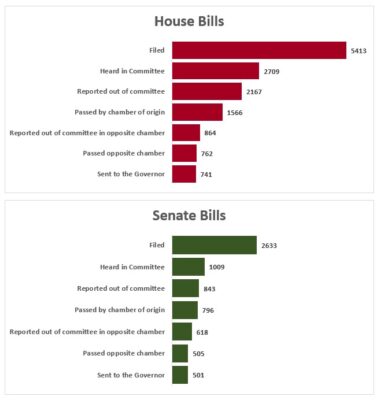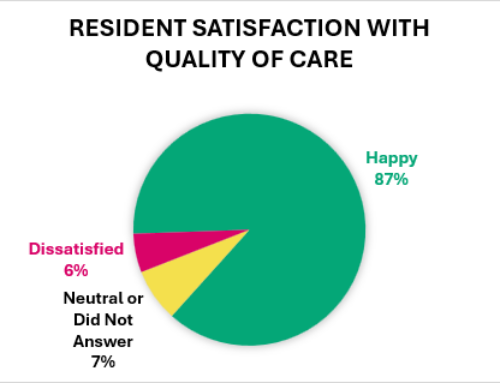If you’ve been following political news in the Lone Star State, then you are aware that the 88th Legislative Session has concluded. It was a wild one to be sure. The House expelled a sitting colleague, Representative Bryan Slaton. The Texas House sent articles of Impeachment for the Texas Attorney General to the Texas Senate for that chamber’s consideration, and the Governor called members back for a special session a mere three hours after the regular session concluded.
Legislators filed more bills this session than they ever have before, and they had an enormous budget surplus to work with. Did that translate into more bills passed? Not really. Look at the numbers.
In the chart showing each legislative session, you’ll see the total number of filed House Bills, the number of House Bills which passed, the percentage of House Bills that passed, filed Senate Bills, Senate Bills which passed, and the percentage of Senate Bills that passed all broken down for the previous five legislative sessions.
Last session, the Texas House and Texas Senate each argued that the other chamber was holding bills hostage as part of complex negotiations. In a final move at the very end of the 87th Legislative Session, the Senate used a procedural tactic to kill a whole bunch of House bills which were all-but guaranteed to pass. If that explains the dismal House Bill passage rate for last session, why was this session so bad? Well, the two chambers resurrected old animosities and engaged in some tit-for-tat political games, which certainly took down a few bills. But more than anything, each chamber was its own worst enemy. Look at the data.
The House eliminated 50% of its own bills by refusing to give them committee hearings. The Senate killed 62% of its own bills with the same tactic. The difference between the two chambers is notable as well. The House eliminated approximately half of its bills at the first stage of the committee and public hearing process, and then the chamber eliminated another 42% of its bills in the administrative steps between the committee hearing and the final vote out of the chamber. By contrast, the Texas Senate made a larger first cut, but was much more careful to pass its remaining bills. So even though the House filed more than double the number of bills the Senate did, the House is only sending an extra 33% more bills to the Governor. There is an adage in Texas politics which rang true this session: Bills are easy to kill and hard to pass.
The final piece of the legislative process is Governor Greg Abbott. As you can see, Governor Abbott vetoed 76 bills. Prior to this session, his average number of vetoes was 43. The sharp increase in vetoes this session reflects a simmering conflict between the Texas House, the Texas Senate, and the Office of the Governor. With the Texas Legislature now in its second called special session, there is little indication that the vetoes helped bring the two chambers any closer to an approved compromise.
TALA members and IPs can access more information about specifics related to bills TALA tracked and more through the members only portal.
If you have questions concerning policy, please contact me at [email protected]. To get updates on legislative activity follow me on Twitter / Under the Dome w/ TALA @TALAPolicy. 








